How to Kosher Your Kitchen
Any type of kitchen whether it is small, large, cluttered or uncluttered can be made kosher. The trick is to adapt the practice of separation between certain types of food. Being able to properly prepare your meats and dairy in separate sections of your kitchen is crucial to koshering the home.
The Beginning
Prepare your kitchen for the transition. Only purchase kosher products to prevent any contamination between non-kosher items. Start to separate the preparation of dairy and meat in the room. In some cases, people use disposable utensils to begin their transition for extra precautions. Dig into the refrigerator and remove any food that may seem questionable.
Utensils
Numerous utensils are still able to be used after the koshering process. There are ways to purify them by boiling them in hot water or using a blowtorch. Whatever method is used all depends on the variability of the utensils make. Check with a rabbi to see which items in the kitchen are approved to be koshered.
Kitchenware
Transitioning to a kosher kitchen always means separation of food and kitchenware. Divide the items that are still good to use in the kitchen, and donate those that can no longer be of use. Purchasing new items for the kitchen such as plastic drainers, basins, additional pots, and dishes may be necessary. Before using your newly purchased items, utensils and dishes may need to be immersed in a process called mikveh. After that, it is also highly recommended to label your storage spaces in order to prevent cross-contamination.
Refrigerator
Any type of food is allowed in the refrigerator as long as they are separated by shelves. In most cases, the door’s shelf or freezer is used to store dairy. When dairy is stored in the shelf, it should be covered with aluminum foil to prevent any airborne contact. Having meat products in the refrigerator should have the same kind of care too.


